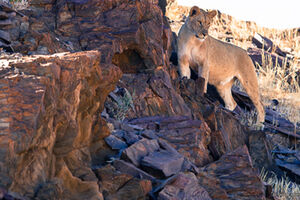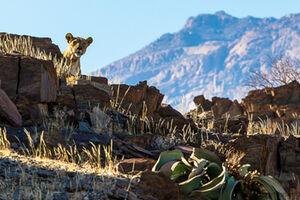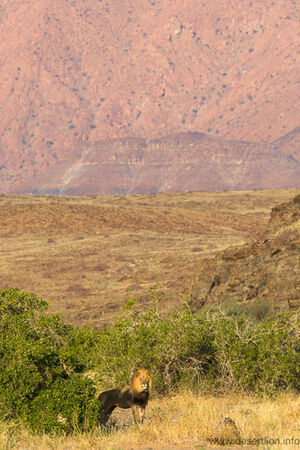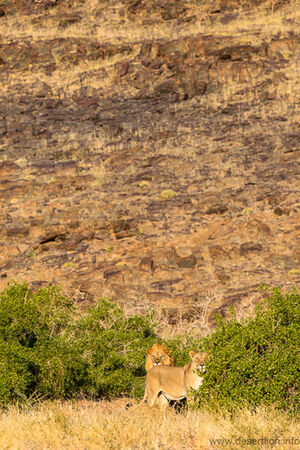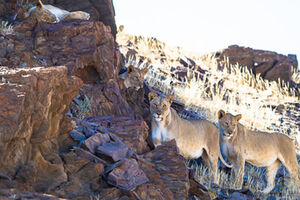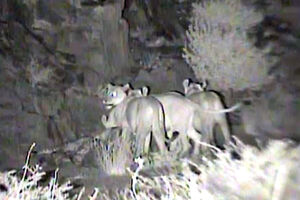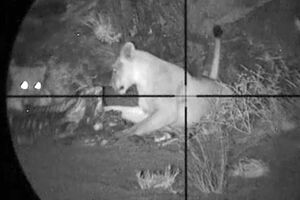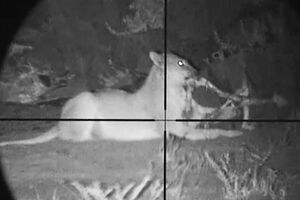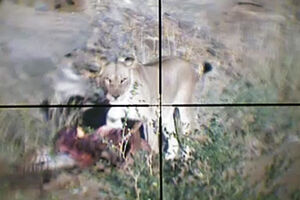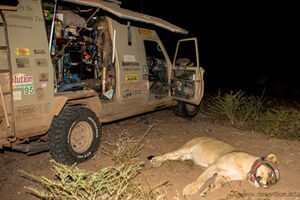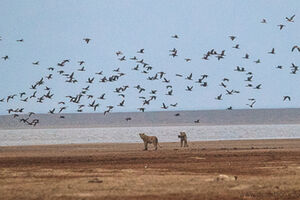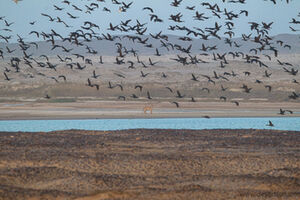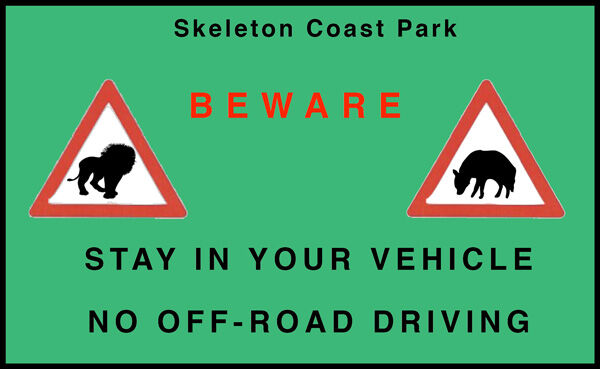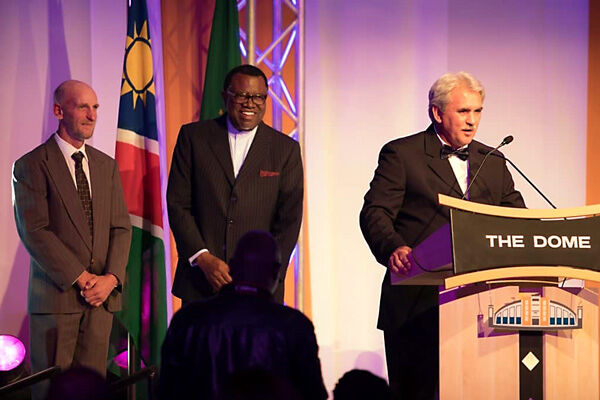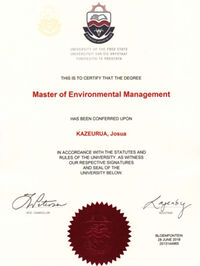Human-Lion Conflict Management – Ugab River
Tuesday 28 August 2018
Human-Lion Conflict Management – Ugab River
During the past month the Desert Lion Project invested a lot of time, resources and energy by collaborating with the Ministry of Environment & Tourism in addressing the human-lion conflict problem in the White Lady / Brandberg area of the Ugab River. The problems started in early January 2018 at the White Lady Lodge when the resident lions that had been habituated, killed 172 sheep inside a make-shift corral. The problems escalated during the following months with many households suffering livestock losses due to the lions. In addition, some of the lions occasionally visited the White Lady Lodge and the White Lady rock painting that posed a threat to public safety. The traditional authorities and the Tsiseb Conservancy submitted an official request that the habituated / problem-causing lions be removed from the area. The Ministry of Environment & Tourism acted in the best interest of the local communities, the tourism attractions around Brandberg, and the long-term conservation of the desert-adapted lion population by removing the lions and relocating them to an undisclosed location.
The Ugab River with its major tributaries, including the Guantegab, Tsiseb, Numas & Naib, and the Huab River were surveyed extensively for the remainder of the resident Ugab and Huab lions.
Early-warning and satellite collars were fitted to three key individuals of the Ugab and Huab prides.
Orphan lionesses of the Hoanib Floodplain
The orphaned lionesses, now 2.5 years old, have adapted to living along the coastal habitat at the mouth of the Hoanib River. They have become highly skilled in catching wetland birds, mainly cormorants and flamingos, and Cape fur seals. Using thermal imagery and infra-red night vision equipment their movements and hunting behaviour have been observed along the coast. The lionesses appear fixated on cormorants and flamingos – they watch the flight patterns of the birds intently, follow them and attempt to capture the birds where they land and roost.
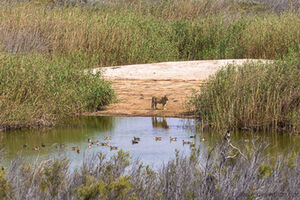
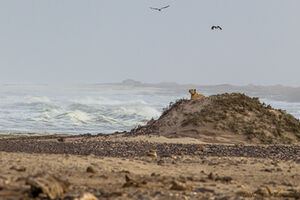
Cape fur seal are being captured when they are resting or sleeping on the beach. The lionesses patrol the coastline at night in search of wetland birds and seals.
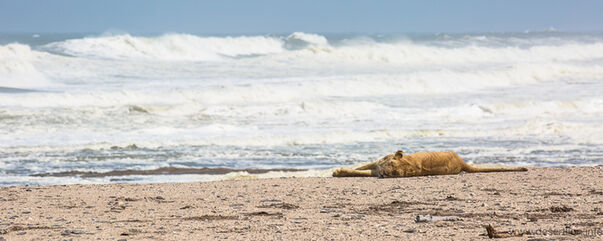
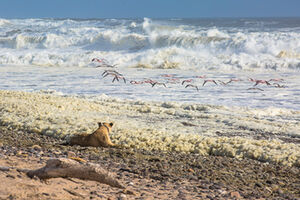
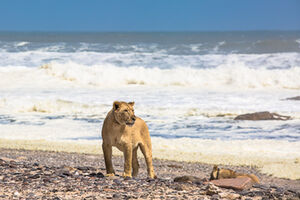
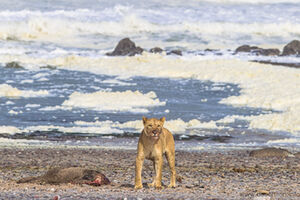
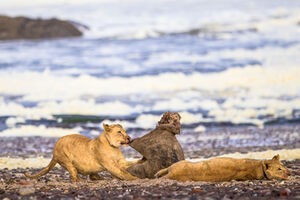
Sign Boards
In conjunction with the Ministry of Environment & Tourism and TOSCO, sign boards were developed to warn and inform visitors to the Skeleton Coast Park of the presence of lions and brown hyaenas. The sign boards will be erected at Ugab Gate, Springbokwasser Gate, Terrace Bay, Mowe Bay, the Koigab River mouth, the Uniab Delta and the Hoanib River mouth.
The Dome, Swakopmund
The Desert Lion Project was honoured to attend the official opening and Gala evening of The Dome in Swakopmund on 2 Aug 2018. During the evening a Limited Edition of the book Vanishing Kings – Lions of the Namib Desert was handed to His Excellency the President of the Republic of Namibia Dr Hage Geingob.
Joshua Kazeurua
Congratulations to the Warden of the Skeleton Coast Park, Mr Joshua Kazeurua, for completing his studies and being awarded the degree Master of Environmental Management from the University of the Free State, South Africa. The Desert Lion Project acted as the external supervisor for Joshua’s field study entitled: Evaluating stakeholder perceptions concerning the free-roaming desert-adapted lions in the Skeleton Coast Park in Namibia.
Abstract
This study evaluated the views and possible concerns of the main stakeholders of the Skeleton Coast National Park of the presence of lions through questionnaires.
Any type of human-wildlife conflict, whether from tourism activities or conflict involving local communities, threaten the existence of wildlife. The perceived conflict between fishermen and the lions of the Skeleton Coast National Park can potentially threaten the existence of this species. It is unlikely that this conflict will be totally eliminated, but measures to reduce and control it at a level where local people and visitors to the park can tolerate and co-exist with wildlife, are a necessity
Although fishermen had a higher sighting frequency of lions than any other group, they had a relatively negative perception of the presence of lions in this area. Tourists had relatively low sightings but had a relatively positive perception of the presence of these lions in the vicinity of the Uniab Delta Waterfall in the Skeleton Coast National Park. In general, one would expect the assumption to be that the more the different groups observed lions, the more positive they would be towards them, but the results of this study indicate otherwise. This is because most Tourists who visit the Park highly want to see lions as there nowhere in the world were free-ranging lions have been observed along a beach or on a sand dune. Lions are prominent features in Namibia and are highly valued for their aesthetic and financial values by the increasing tourism industries.
All groups agreed that lions might injure or kill people utilising the same area and the group that regarded these lions as the most dangerous to co-exist with humans in the area were the fishermen, while the lowest were the tourists. Fishermen regarded the presence of lions in this area as a threat to their angling activities.
For the purpose of creating awareness of the presence of lions in the Skeleton Coast National Park, informational material and leaflets should be developed and displayed at key tourist information centres within the park.

